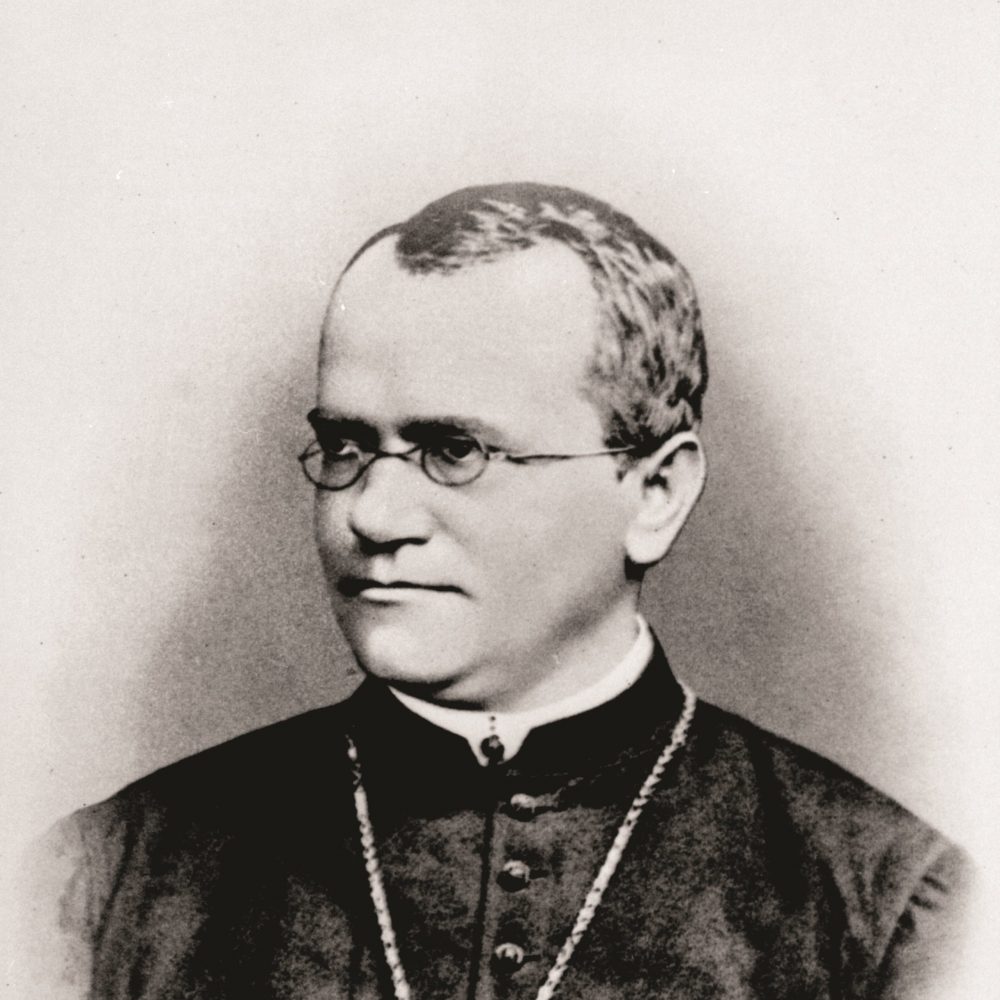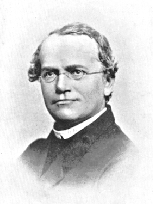Describe the Work of Gregor Mendel
Through meticulous record-keeping Mendels experiments with pea plants became the basis for modern genetics. Heinzendorf Hapsburg Empire Modern-Day Czech Republic Gregor Mendel was an Austrian-born German-speaking Augustinian monk who is famously known as the founder of the modern study of genetics though his work did not receive much recognition.

Genetics The Work Of Gregor Mendel Notes Gregor Mendel Middle School Science Resources Biology Lessons
Gregor Johann Mendel was an Austrian biologist whose work on heredity became the modern theory of genetics.

. The Work of Gregor Mendel. He mainly gave two laws. Fertilizationis the process in which reproductive cells egg from the female and sperm from the male join to produce a new cell.
Answer 1 of 4. Created from cross of true. He did some very good research with garden peas.
Gregor Johann Mendel is father of Genetics. It would dramatically change the field of biology when it was rediscovered around 1900. He found that when he bred.
Though farmers had known for millennia that. Mendel carried out his work with ordinary garden peas. The paper was rarely mentioned over the next 35 years.
Gregor Johann Mendel What. Gregor Johann Mendel was a meteorologist mathematician biologist Augustinian friar and abbot of St. He worked on pea plants in his kitchen garden and proved the inheritance pattern with statistical data.
The result is highly inbred or true-breeding pea plants. In 1871 he made the first scientific description of a tornado that had caused considerable damage to the city of Brno in October of the previous year. Although Mendel is famous for his work on inheritance and hybridization he was also a respected meteorologist.
The law of inheritance was proposed by Gregor Mendel after conducting experiments on pea plants for seven years. Gregor Mendels work on genetics was finally published as Experiments in Plant Hybridization in the Proceedings of the Natural History Society of Brünn in 1866. Atraitis a specific characteristic such as in peas seed color or plant height.
The flower petals remain sealed tightly until pollination is completed to prevent the pollination of other plants. Thomas Abbey in Brünn Margraviate of Moravia. He was interested in mathematics and physics.
Little was known about the principles of inheritance until an Austrian monk named Gregor Mendel conducted several experiments in 1865 to try to discover inheritance patterns. This species naturally self-fertilizes meaning that pollen encounters ova within the same flower. His work was important to the understanding of heredity.
These factors are called. Describe what happens during segregation. In addition he used the same scientific method to make climate predictions.
The different forms of genes are. The Work of Gregor Mendel. Mendels seminal work was accomplished using the garden pea Pisum sativum to study inheritance.
In the mid-19th century Gregor Mendel 1822-1884 studied the inheritance of different characteristics in pea plants. Mendels laws of inheritance include law of dominance law of segregation and law of independent assortment. Gregor Mendel was an Austrian monk.
An individuals characteristics are determined by factors passed from parents to offspring. Inheritance is the passing on of particular genes from parents to offspring. The law of segregation states that every individual possesses two alleles and only one allele is passed on to the offspring.
Seed color plant height of an individual Hybrid. -the female part of the flower produces egg cells. Mendel was a well educated man and he spent ten years researching in order to come up with his two principles.
Mendel was born on July 22 1822. Where he was changed his name to. He was a pastor at a church in Brunn Austria.
July 20 1822 - January 6 1884 Where. Learning Objectives Describe Mendels studies and conclusions about inheritance. Gregor Mendel is best known for his work with his pea plants in the abbey gardens.
Gregor Mendel founded modern genetics with his experiments on a convenient model system pea plants. Gregor Mendel is known as the Father of Modern Genetics. However he did not receive any.
No-one seemed to care. Gregor Mendel was an Austrian monk who discovered the basic principles of heredity through experiments in his garden. Mendels Experiments Peas are a model system.
He is a pretty big name in the science world. Gregor Mendel An Austrian monk and botanist was born in 1822 to dedicate his life to religion science and mathematics. Born into a poor farming family and it was difficult for poor families to obtain a good education and Johann Mendel saw the only way to escape a life of poverty was to enter the monastery.
He is considered the father of genetics After publishing his famous work Test on plant hybrids In 1866. So much so that he is generally considered a founder of the science of genetics. Mendel drew two conclusions.
Mendels observations became the foundation of modern genetics and the study of. Mendel was born in a German-speaking family in the Silesian part of the Austrian Empire and gained posthumous recognition as the founder of the modern science of genetics. Gregor Mendels Peas Mendel knew that -the male part of each flower produces pollen containing sperm.
Principle of dominance-some alleles are dominant and others are recessive. He was also the first person to explain how humans are the result of the joint action of paternal and maternal genes. Started with true breeding plants Trait.
He spent about seven years planting breeding and cultivating pea plants in an experimental part of the abbey garden that was started by the previous abbot. Father of Modern Genetics When. His interest made him work on inheritance pattern of genes which he called factors.

Gregor Mendel Life Experiments Facts Biography

Gregor Mendel The Father Of Genetics John Innes Centre

Gregor Mendel A Private Scientist Learn Science At Scitable

Gregor Mendel Discovered The Basic Principles Of Heredity New Scientist
No comments for "Describe the Work of Gregor Mendel"
Post a Comment